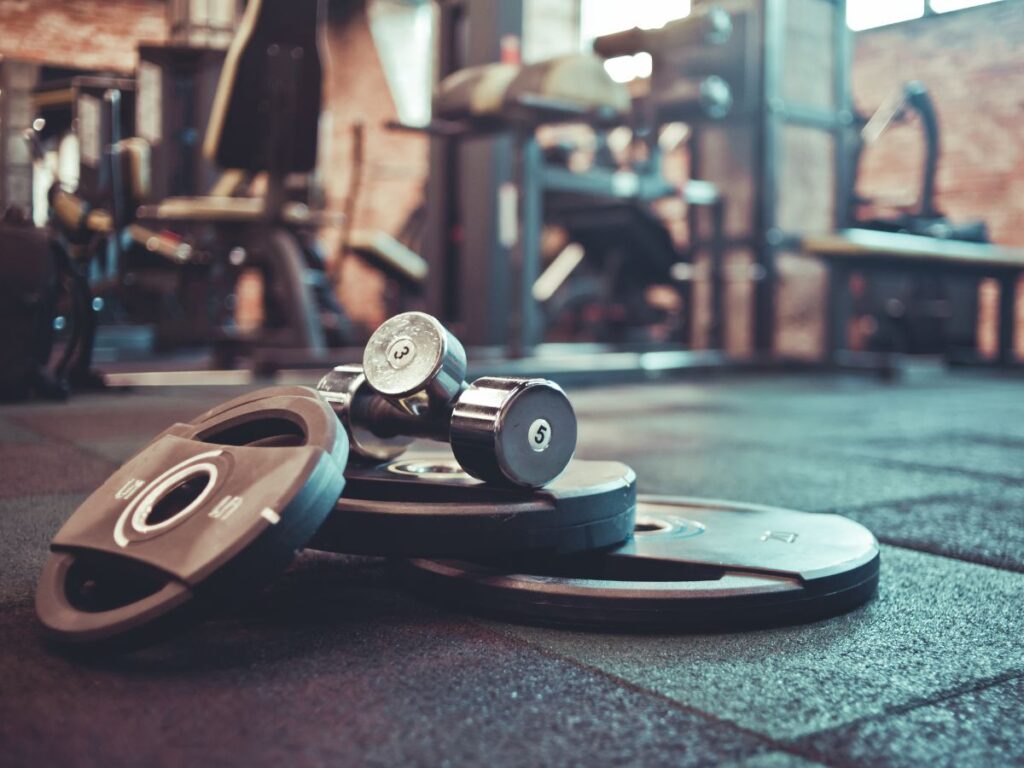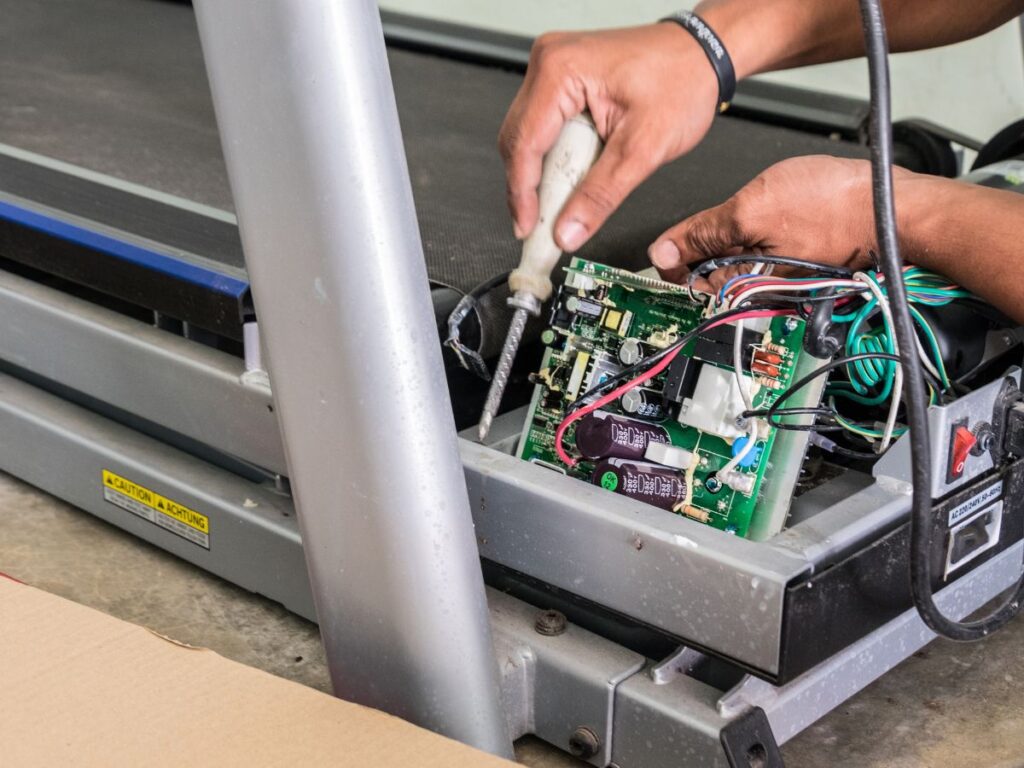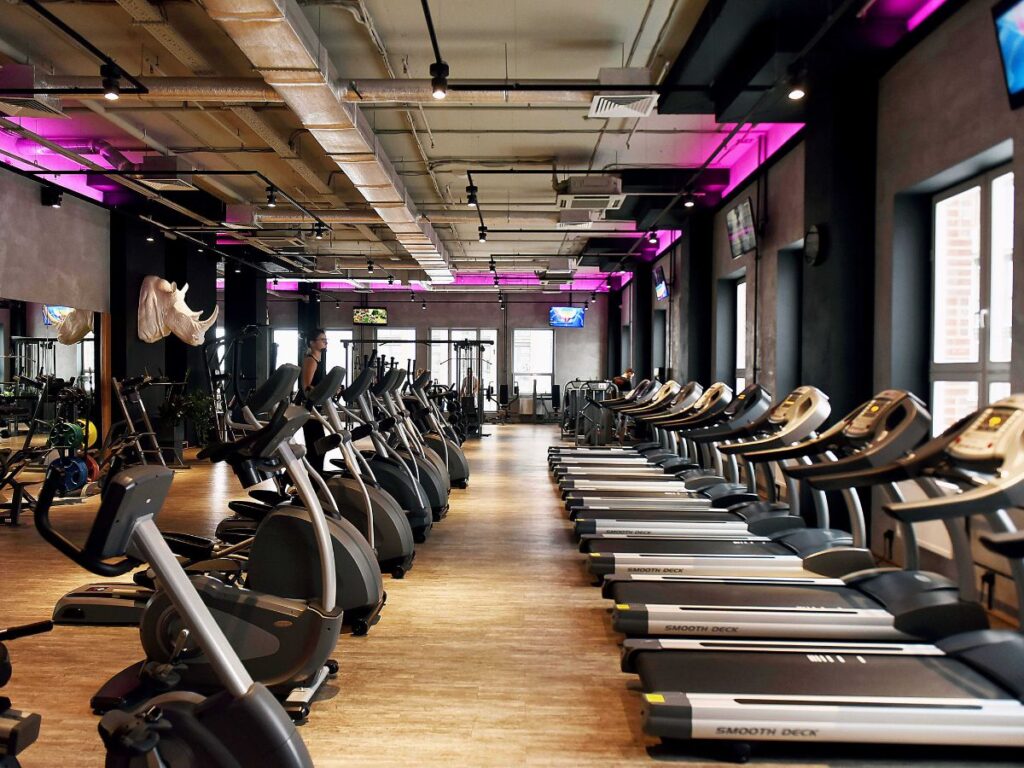I still remember the shock from my first big equipment invoice. One treadmill, a few benches, some weight stacks and the price? Way higher than I expected.
At the time, I thought I was being overcharged. But after years of working in this industry, I finally understood where that number came from.
If you’ve ever asked why commercial gym equipment costs so much, you’re not alone.
In this article, I’ll break it all down. You’ll learn what affects pricing, where the money goes, and how to spot the real value behind the machines.
By the end, you’ll have the insight to make smarter buying—or reselling—decisions.
So let’s get started!
- 1. Key Factors Driving Up the Cost of Commercial Gym Equipment
- 2. The Hidden Costs: Supply Chain, Shipping, and Tariffs
- 3. Maintenance, Repair, and Lifecycle Costs
- 4. Customization Options That Increase Prices
- 5. Cost-Saving Alternatives for Smart Buyers
- 6. Market Trends Influencing Prices
- 7. How to Choose the Right Commercial Gym Equipment Without Overpaying
- Conclusion
1. Key Factors Driving Up the Cost of Commercial Gym Equipment
At first, I didn’t get it. Why would one machine cost $500 and another $5,000?
But over time, I saw the difference. Real commercial equipment isn’t just built to look good. It’s made to last under pressure, all day, every day. From steel to screens, every part adds value.
This section will show you what drives the price and what makes it worth paying for if you’re serious about performance and durability.
Heavy-Duty Construction
Commercial machines are built with thick steel frames that can handle 200 to 600 pounds of daily use without bending or shaking. Welded joints—stronger than bolts—help them stay solid, even with 100+ users a day. I’ve seen cheaper frames fall apart in under a year, but these hold up.
Engineering and Design Standards
Commercial machines are tested for ergonomics, so they move with your body and reduce strain or injury. Many meet safety standards like ASTM or CE, which prove the equipment passed tough performance checks. I’ve seen what happens when those standards are skipped—it’s risky and often costly in the long run.
Smart Technology and Consoles
Today’s machines include smart features like touchscreens, heart-rate tracking, Netflix, and iFit workouts. Many also connect to fitness apps and gym software, making tracking easier and more accurate. This tech adds to the price—but it’s now expected and makes workouts more engaging.
Brand Reputation and Warranty
Brands like Life Fitness and Technogym cost more, but the quality shows—I’ve used them myself. They offer long warranties, faster support, and have years of research behind their designs. You’re not just paying for the name you’re paying for equipment that works and keeps working.

2. The Hidden Costs: Supply Chain, Shipping, and Tariffs
When I first started working with commercial machines, I thought price came down to just parts and labor. But over time, I saw the real picture. Much of the cost happens before the machine even gets close to a gym.
There are hidden layers—things most people don’t see. But once you do, the price tag starts to make more sense.
Global Material Shortages
Since COVID, factories have struggled to get enough parts and raw materials. Even basic items like steel or wiring are harder to find. That slows down production—and pushes prices up.
Here’s what’s been affected:
- Steel, aluminum, and plastic
- Motors, touchscreens, and chips
- Even small parts like bolts and cables
One factory I spoke to had treadmills sitting half-built for weeks. Just waiting on a single missing motor.
Logistics and Container Shipping
Getting equipment from one country to another isn’t cheap—and it’s gotten worse. Freight costs have soared, and port delays are more common than ever—one of the many reasons why treadmills are so expensive even before they reach your gym floor.
Here’s what that means:
- Ocean freight prices have tripled in some areas
- Shipments often wait days—or weeks—at ports
- Customs inspections add more time and cost
I once tracked a delivery that took two extra weeks because of port congestion. That delay alone added hundreds to the total cost.
Import Tariffs and Regional Taxes
Even after a machine is built and shipped, the costs aren’t done. Import taxes and local markups hit hard before the equipment even reaches the buyer.
What this can include:
- Import taxes between 15–25% depending on country
- Local shipping, storage, and handling fees
- Markups by distributors or resellers
So a machine that started at $1,000 might cost you double—just to cover these backend charges.
What It Might Look Like (Cost Breakdown)
I once reviewed a full cost sheet for a commercial treadmill. It opened my eyes.
Here’s how the price added up:
- Raw materials: $500
- Labor and assembly: $350
- Shipping and customs: $400
- Tariffs and taxes: $300
- Brand and reseller markup: $450
- Total: $2,000
Once you see how it breaks down, the price doesn’t feel so random anymore. It’s not just the gear—it’s everything it takes to get it to you.
3. Maintenance, Repair, and Lifecycle Costs
If you’ve ever had a machine break down in the middle of a busy day, you know how frustrating—and expensive—it can be.
That’s why it’s not just about the price you pay upfront. It’s about how long the machine lasts, how easy it is to fix, and how often it goes down. All of these things add up over time and impact your bottom line.
Heavy Use in Commercial Settings
In most gyms, machines get used for 8 to 16 hours a day. That’s not just a few reps here and there—it’s constant wear-and-tear from all kinds of users.
The impact adds up fast:
- Sweat wears down grips and pads
- Moving parts face more friction and stress
- Misuse by beginners or rough users shortens life
I’ve seen treadmills wear out in under a year when they weren’t built for heavy use. That’s a big loss if you were counting on it lasting five.
Built-in Service Ability
Good commercial equipment is made with repairs in mind. That means easy-access parts, service panels, and detailed repair guides. You don’t need to tear the whole machine apart just to fix one thing.
Here’s what makes a difference:
- Components you can reach without special tools
- Parts that stay available for 5–10 years
- Access to in-house or certified techs
I’ve worked with machines where a quick part swap took 30 minutes. With lower-grade gear? The same fix took hours—or worse, the parts weren’t even available.
Downtime Costs
When a key machine breaks, it’s more than just a hassle—it’s lost money. Especially if it’s a popular one like a treadmill or leg press.
Here’s what you risk:
- Members walk out when their favorite equipment is down
- Missed sessions, unhappy clients, or even cancellations
- Extra labor or service costs for emergency repairs
I once watched a gym lose an entire week’s worth of spin classes due to broken bikes. The equipment was cheap, but the downtime wasn’t.

4. Customization Options That Increase Prices
There’s something powerful about walking into a gym that feels like it was built with purpose. The colors match. The logo’s stitched right into the seat. Even the handles feel just right.
But every detail like that? It adds cost.
If you want your gym or product line to stand out, customization helps. Just know that the more personalized it gets, the more you’ll pay for it.
Logo Branding and Upholstery Choices
Want your logo on the bench? That means custom embroidery, which takes time and skilled labor.
Want colors that match your brand? Manufacturers will switch to different vinyl grades or padding types to match your look—but that requires separate materials and setup.
Common upgrades include:
- Embroidered logos on headrests or pads
- Custom vinyl in your exact brand colors
- Upgraded padding thickness or finish
A basic machine might cost $1,200. Add embroidery and branded vinyl, and it jumps to $1,600.
Equipment Configurations
Some brands let you choose between dual-function or single-function equipment. Dual-function saves space, but the mechanism costs more.
You can also pick:
- Cable adjustments (more pulleys, more cost)
- Handle styles (rubber grip, rotating options)
- Attachment options (footplates, lat bars, ropes)
I once ordered a lat pulldown machine with a custom foot brace and adjustable grip—great features, but the price was 25% higher than the standard unit.
Private Labeling for Distributors
If you’re buying to resell under your own name, that’s called private labeling. It usually involves:
- New molds for frame logos
- Custom decals or stickers
- Branded packaging and boxes
- Safety certifications under your company name
But here’s the catch: manufacturers usually ask for MOQs (minimum order quantities). You might need to buy 30–50 units just to get the custom label. That adds cost, even if the unit price is only slightly higher.

5. Cost-Saving Alternatives for Smart Buyers
If you’re working with a tight budget, you’re not alone. I’ve helped gyms open on shoestrings—and seen owners get creative without giving up on quality.
The good news? There are smart ways to save money and still get strong, reliable equipment. You just need to know where to look and what to avoid.
Light-Commercial or Refurbished Equipment
If your gym doesn’t run all day—or you’re setting up a private studio—light-commercial equipment can work well. It’s built better than home-grade but costs much less than full commercial models.
Refurbished machines are another option. These are used units from big brands that have been cleaned, repaired, and tested.
Pros | Cons |
Lower upfront cost | May wear faster in high-use gyms |
Trusted brands at better prices | Limited stock or older models |
Often comes with basic warranty | May have minor cosmetic flaws |
Buy Direct From Manufacturers
Buying directly from the factory—especially in China or India—can save you a lot. You skip the middlemen and buy at factory-level pricing.
Some offer OEM (your logo on their product) or ODM (custom-made designs).
Pros | Cons |
Lower price per unit | Longer delivery time |
Customization options available | Quality varies—requires due diligence |
Helpful for brand-building | Minimum order quantities may apply |
Buy in Bulk or During Off-Season
If you’re opening a new gym or upgrading, buying in bundles or during slow seasons (like Q4) can lead to big discounts.
Some sellers offer perks like free freight or bonus items when sales are slow.
Pros | Cons |
Big discounts on full setups | Requires more upfront spending |
Extra deals or bonuses included | You may need space to store everything |
Good timing can save thousands | Inventory may not match peak demand |
Leasing Options
Leasing lets you pay month-by-month instead of everything at once. Some plans also include maintenance, which takes one more task off your list.
Pros | Cons |
Low upfront cost | More expensive over time |
Keeps your cash flow flexible | May limit your upgrade options |
Maintenance might be included | Some contracts have strict terms |
There’s no one-size-fits-all answer. But if you weigh the options, you can find the right setup for your goals—and your budget.
6. Market Trends Influencing Prices
“Has gym equipment always been this expensive?” I asked myself that a few years ago, staring at a quote that felt double what I used to pay. But it wasn’t just me. Prices were going up—and fast.
Turns out, it wasn’t one thing. There were a bunch of changes happening across the whole fitness industry. If you’re wondering why prices seem higher than before, here’s what’s really going on.
Increased Demand After COVID
After gyms shut down during COVID, people turned to home workouts. But when gyms reopened, there was a big shift. Many home users moved into commercial gym spaces, creating a wave of new demand.
At the same time:
- Old equipment needed replacing
- New gyms opened to meet rising fitness interest
- Orders flooded manufacturers who were already behind
That kind of demand drives up prices—and leads to longer wait times too.
Fitness Tech and Smart Equipment Boom
Today, people expect more from machines. It’s not just weights and pulleys anymore. Now it’s touchscreens, app syncing, and subscription programs like iFit or Peloton.
That means:
- Higher research and development (R&D) costs
- More expensive components and software
- Bundled services that change how pricing works
I’ve seen simple treadmills jump $500 just from tech upgrades alone. And once people get used to those features? It’s hard to go back.
Shift Toward Sustainable Materials
More brands are switching to eco-friendly plastics, recycled steel, and low-emission paint. That’s great for the planet—but those materials cost more.
I spoke with one manufacturer who said their switch to “green” vinyl doubled their upholstery costs. They stuck with it. But they had to raise prices to keep up.
Consolidation of Brands
Big companies are buying smaller ones. That means fewer choices—and less competition on price. With fewer options, large brands can set higher prices without losing as many customers. I’ve seen machines from merged brands cost more, even though the design didn’t change.
7. How to Choose the Right Commercial Gym Equipment Without Overpaying
“I want equipment that lasts but doesn’t break the bank.” That’s a sentiment I’ve heard from many gym owners, and I’ve felt it myself. The key is balancing quality with cost, ensuring you invest wisely without compromising on performance
Here’s how to make informed decisions that align with your gym’s needs and budget.
Match Equipment to Your Gym’s Traffic Level
At Yr Fitness, we understand that the volume of gym traffic directly impacts equipment wear and tear. For facilities with high daily usage, our full commercial-grade machines are designed to withstand constant use. Medium-traffic gyms might benefit from our light-commercial options, while home-grade equipment is best suited for staff lounges or executive fitness rooms.
Prioritize Based on Member Needs
It’s essential to align your equipment choices with your members’ preferences. If your clientele leans towards strength training, investing in quality racks, benches, and free weights is crucial. Conversely, for a cardio-focused crowd, prioritizing treadmills, bikes, and rowers ensures member satisfaction and optimal equipment utilization.
Compare Warranties and Support
We at Yr Fitness pride ourselves on offering comprehensive warranty packages. Our lifetime warranties on structural steel frameworks and extended coverage on components like rotary bearings and weight stacks provide peace of mind. Additionally, our dedicated support team ensures prompt assistance, minimizing downtime and maintaining gym operations smoothly.
Know When to Buy Cheap and When to Invest
Strategic spending can make a significant difference. Investing in high-usage machines such as treadmills, squat racks, and benches ensures longevity and member satisfaction. For accessories like mats, resistance bands, and jump ropes, opting for more affordable options can free up budget without compromising on quality.
Conclusion
At first, the high prices didn’t make sense. But once I understood what I was paying for, everything changed.
Now, you know the what, why, and how behind commercial gym costs.
You’ve learned how to buy smart, where to save, and when to spend. Use this guide as your foundation.
You’ve got goals. Let’s help you reach them.
Are you ready to invest in gear that actually lasts?
Contact us today—we’ll help you make a choice that’s worth every penny.
Related articles:






